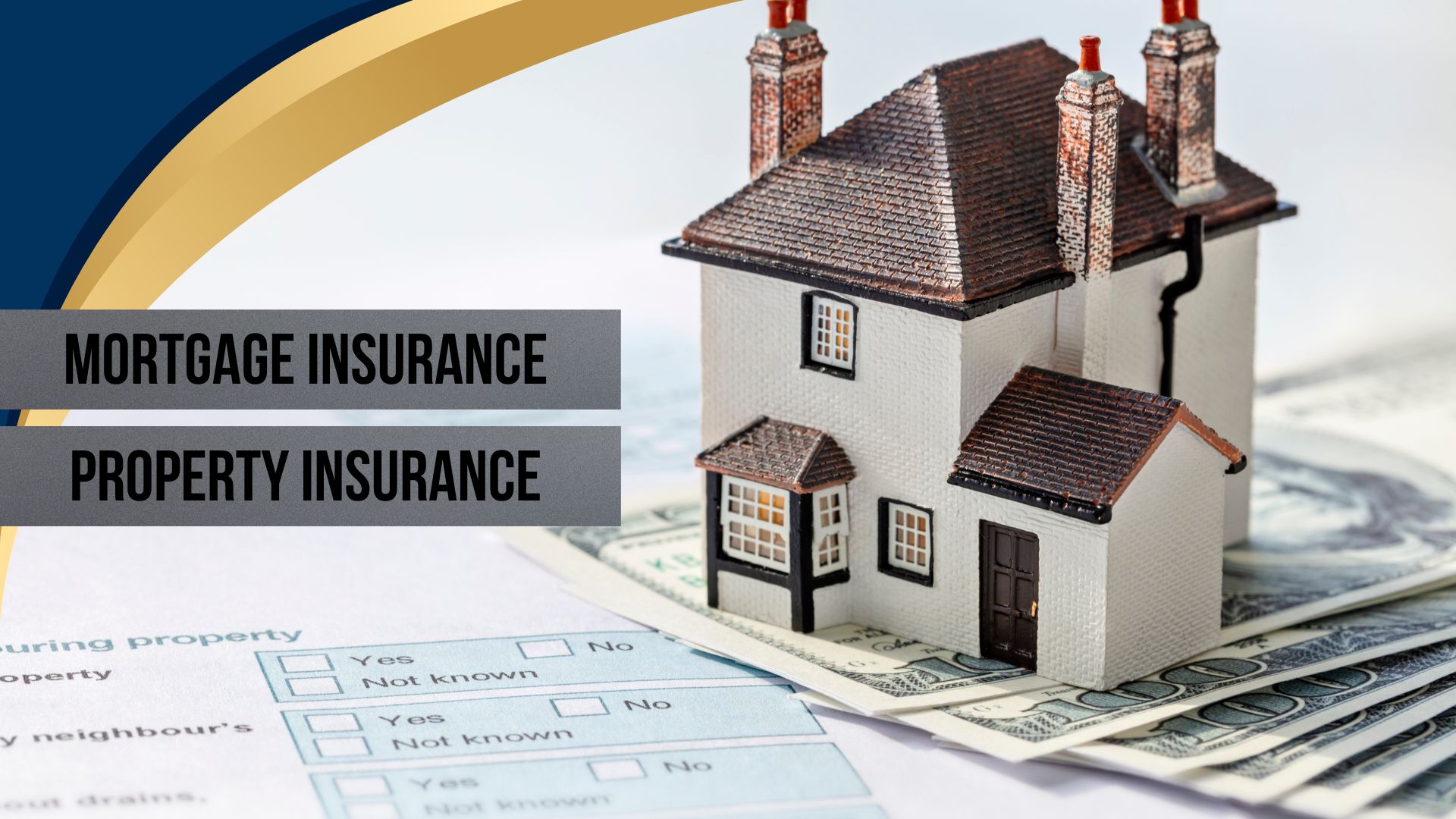Understanding Mortgage Insurance and Property Insurance
If you’ve purchased a home or plan to, understanding the different types of insurance tied to it is crucial. Two key types are mortgage insurance and property insurance, but they serve very different purposes.
Mortgage insurance protects lenders in case a borrower defaults on their home loan. It’s usually required when the down payment is less than 20%. The cost of mortgage insurance is based on the value of the property. For example, a more expensive home will generally result in higher mortgage insurance premiums because the amount being insured is greater.
On the other hand, property insurance protects homeowners. It covers the cost of rebuilding or repairing the home in case of damage caused by events like fires, storms, or theft. This cost is calculated based on construction material and labor prices in your area—not the market value of the home. Essentially, property insurance focuses on what it would take to restore the structure itself, not what the home would sell for.
Why This Distinction Matters
It’s easy to confuse these two types of insurance, but this key difference is what drives their costs and purpose. For example, even if your home’s market value drops, the cost to rebuild it could stay the same or even increase due to inflation or rising construction costs. Conversely, a booming housing market could drive up your mortgage insurance premiums, even if construction prices remain stable.
Understanding these differences can help you make smarter choices as both a homebuyer and homeowner.
The Role of Rising Housing Costs
The increasing costs of homes are having a ripple effect across both mortgage and property insurance. For mortgage insurance, higher property prices mean lenders are insuring larger loans, which increases premiums. For property insurance, rising labor and material costs drive up the expense of rebuilding, putting pressure on insurance rates.
This is especially challenging for families already squeezed by housing affordability issues. For many, purchasing a home is difficult enough without these added financial burdens.
Climate Risks Put Pressure on Property Insurance
Extreme weather events are becoming more common, and they’re impacting property insurance, too. Insurers now factor climate-related risks into their policies, and rebuilding homes in high-risk areas costs significantly more. This can lead to higher premiums, even if the homeowner has taken safety measures like adding storm shutters or reinforcing their roof.
Meanwhile, these same disasters can also affect housing markets, as areas prone to floods, wildfires, or hurricanes may see fluctuating property values. That, in turn, impacts the cost of mortgage insurance, especially for homes requiring federal disaster recovery loans.
Mortgage Insurance Insights from the Morningstar Report
A recent report from Morningstar sheds light on critical trends shaping the mortgage insurance industry. With housing affordability challenges persisting, private mortgage insurers (USMIs) continue to play a pivotal role in helping families attain homeownership, especially for those unable to make a 20% down payment.
Impact of High Mortgage Rates on Mortgage Insurance
Mortgage rates, currently at their highest levels since 2002 at 6–7%, have significantly reduced the volume of new insurance written (NIW), dropping from an average of $132 billion per quarter in 2020–2022 to $73 billion in 2023–2024. For consumers, this means higher monthly mortgage payments, making homeownership less affordable, especially for buyers needing low-down-payment options supported by mortgage insurance.
Homeowners are also less likely to refinance due to unattractive rates, keeping them tied to existing mortgage insurance policies for longer. While mortgage insurers maintain strong revenues despite these changes, the continued high costs emphasize the need for careful financial planning by both prospective buyers and current homeowners.
How High Persistency Rates Are Keeping Homeowners Locked Into Costly Insurance Policies
High mortgage rates have led many homeowners to avoid refinancing, causing mortgage insurance policies to remain active for longer periods. Persistency rates, which measure how long policies stay in effect, have jumped to around 85% from just 63% a few years ago. For consumers, this means higher long-term insurance costs, as homeowners remain locked into their existing policies rather than switching to potentially better terms. While this trend supports the financial stability of mortgage insurers, it limits flexibility for homeowners and may prolong their reliance on mortgage insurance, leaving fewer opportunities for cost-saving changes.
Low Loss Ratios and Competitive Pricing
Low loss ratios in the mortgage insurance industry mean that insurers are paying out fewer claims compared to the premiums they collect, which helps keep the industry financially stable. For consumers, this translates to an environment where mortgage insurers can continue offering reliable coverage. However, while competition once drove premiums lower, the current economic climate has paused aggressive price cutting. This stabilization in pricing ensures that rates remain steady, but it may also limit opportunities for homeowners and buyers to save on insurance costs in the short term. Overall, while the industry’s stability is a positive sign, consumers may find fewer discounts or competitive pricing options than in previous years.
10 Smart Strategies for New Homebuyers to Lower Mortgage Insurance Costs
If you’re a first-time homebuyer, minimizing your mortgage insurance costs can make a big difference in keeping your overall expenses manageable. Here are 10 actionable tips to help you secure the lowest rates possible:
- Increase Your Down Payment – A larger down payment can help you avoid private mortgage insurance (PMI) altogether or secure better terms. Aim for at least 20% if possible.
- Boost Your Credit Score – Lenders offer better rates to buyers with strong credit histories. Pay down debt, avoid new credit inquiries, and correct any errors on your credit report.
- Shop Around for Lenders – Different lenders may have varying PMI rates. Take the time to compare options and negotiate for the best terms.
- Consider a Piggyback Loan – A second loan, like an 80-10-10 structure, can help you bypass PMI by reducing your loan-to-value ratio.
- Opt for Lender-Paid Insurance – Some lenders offer options where they cover the insurance premium in exchange for a slightly higher interest rate. This can lower upfront costs.
- Explore FHA Loans Carefully – For buyers with lower down payments, FHA loans offer government-backed insurance. While the premiums are fixed, they can still be cost-effective for some.
- Do Your Homework on Loan Types – Conventional loans often offer more flexible PMI options if you qualify, so check if these align with your needs.
- Lock-In Favorable Terms Early – Mortgage insurance costs can vary based on market factors. Work with your lender to lock in a good rate before conditions change.
- Prepay Insurance Premiums – If your finances allow, paying the full insurance amount upfront could save you money compared to monthly installments.
- Plan to Cancel PMI – Once you’ve built 20% equity in your home, you can request PMI removal on conventional loans. Plan ahead to build equity quickly through smart repayment strategies.
Final Tip:
Always communicate with your lender to understand your options. They can provide specific guidance based on your loan terms and financial situation. By taking proactive steps, you can reduce or eliminate your mortgage insurance costs and save money in the long run.
What This Means for Homebuyers
For potential homebuyers, the report underlines the importance of understanding mortgage insurance as part of the broader cost of homeownership. While persistency and low loss ratios are good for insurers, homeowners may struggle with increasing overall housing costs driven by high mortgage rates and limited affordability.
By organizing your finances carefully and exploring cost-saving measures, such as improving credit scores or paying down loans quicker, buyers can make the most of these insights to soften the impact of rising costs.


